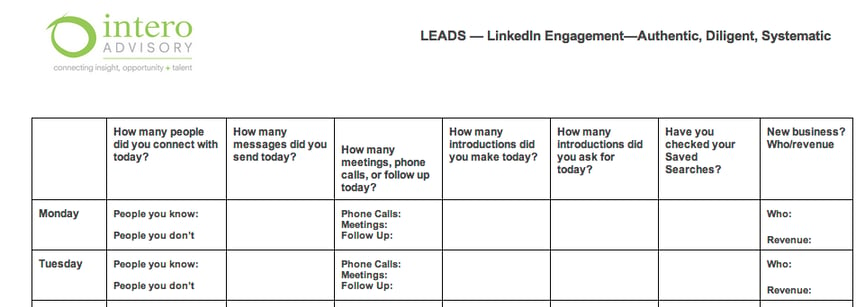Would you walk into a room full of people you don’t know and ask who wants to do business with you? No one I know does that. Why do it on LinkedIn? Selling on LinkedIn is not a strategy that pays off in the end.
But isn’t that the point of social selling and LinkedIn in particular? Absolutely. But it’s all in how you do it. And the C-Suite has to be especially strategic and tactful about how they approach LinkedIn when the ultimate goal is really sales. Just the other day I was talking with someone who explained how a company she knows is working LinkedIn. They hired a “social media expert” to represent the CEO, find prospects, ‘Connect’ with them and then follow up with an InMail (available only on premium accounts) asking for a meeting.
When I asked how that was working, she wasn’t sure there was any measurement in place. They had, perhaps, one piece of new business, she believed.
One good piece of business can make that strategy worth it, but I think there is a much larger and more important conversation here.
The Strategy for CEOs on LinkedIn
It’s about how CEOs should build their LinkedIn network, what kind of network they want and need, and what to do about all the connections currently in their networks who they don’t know.
People want to connect with CEOs, no doubt. They should have a high rate of accepted invitations. (Although I know a CEO who tried connecting with people he did not know and LinkedIn shut his account down for 30 days. LinkedIn actually does NOT like this strategy.)
So if you have most people accepting your invitations because you are a CEO and then you send them a note asking for a meeting, what do they think? Some thoughts:
- Hey, this CEO is interesting in meeting me, terrific.
- Hey, this CEO sounds a bit salesy
- Hey, this message sounds like it might be from someone else other than the CEO, what CEO has time to do this?
If the connection doesn’t bite on the first LinkedIn message asking for the meeting, then what? Is there a drip campaign or another note to get together, or are they just forgotten and just languishing in the network? Make a plan for how to address non-responders and keep track of results. Otherwise the CEO’s network is not working for him/her or the company. It certainly will not assist in driving sales.
I talked with a CEO of an IT company the other day who is heads-up, engaged in the community and networking, and creates six or more introductions between people each week. He gets it and has a highly engaged network. People will definitely want to connect with him because he brings access and referrals to the people he knows–but he isn’t selling on LinkedIn. He is connecting. The CEO who has someone else managing his or her LinkedIn account can’t do that. The person speaking for them won’t know who to introduce or what to say. LinkedIn is a personal process.
The personal meeting
An alternative business development strategy to connecting and messaging or virtual introductions is the old-fashioned personal meeting. Upgrade your LinkedIn account to a Premium membership so you have InMail, send the person you’d like to meet or connect with a message saying you are interested in setting up a time to talk, meet, or have a coffee (whatever makes sense based on your sales process and geography—I do most of my initial meetings via a scheduled phone meeting, it works great). Mention you prefer to meet before connecting. You see potential value in connecting via LinkedIn but a conversation makes sense before connecting. This practice also assures the potential connection that you are interested in who they are and are not just going for the sale.
Try this. Measure it too. If you have sent an initial message through InMail you can easily keep track via your LinkedIn inbox. You will know how successful you are at starting a conversation in LinkedIn, know who you are meeting with, and know the business you are closing.
There is no question that the C-suite and CEOs in particular should be even more strategic about how they use LinkedIn for business development and recruiting. An unsophisticated approach is not going to increase your online presence and reputation.
Interested in our LEADS business development four-part strategy & measurement plan? Email colleen@interoadvisory.com or go to Intero Advisory’s Resource page and download this and other LinkedIn resources.

Let us know how you measure your LinkedIn engagement.


